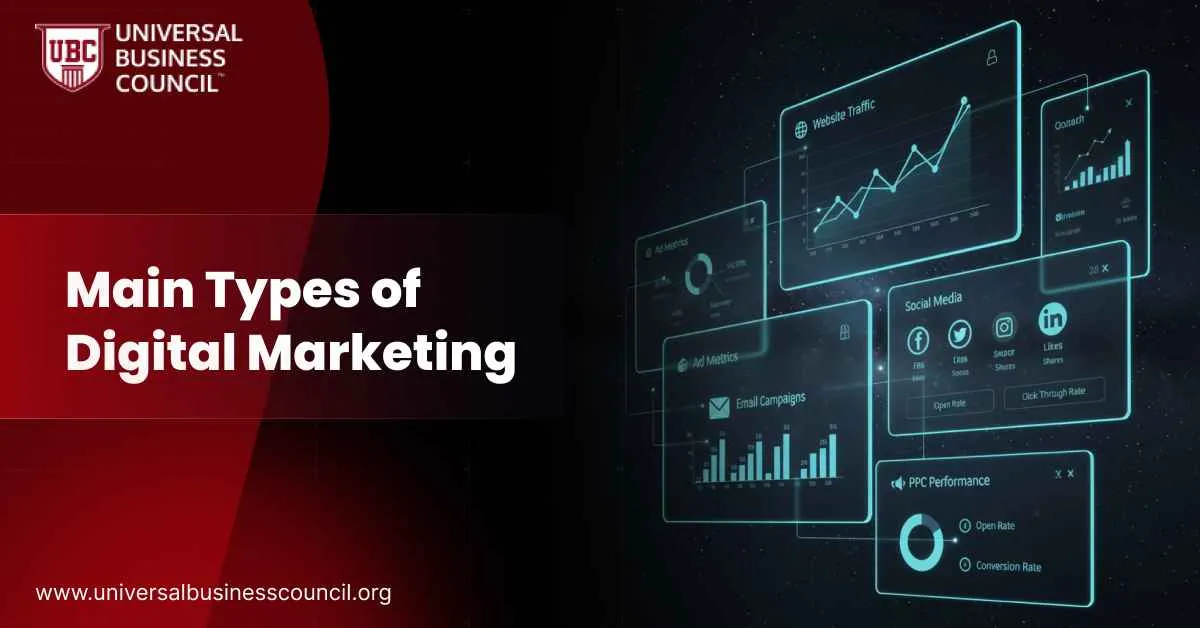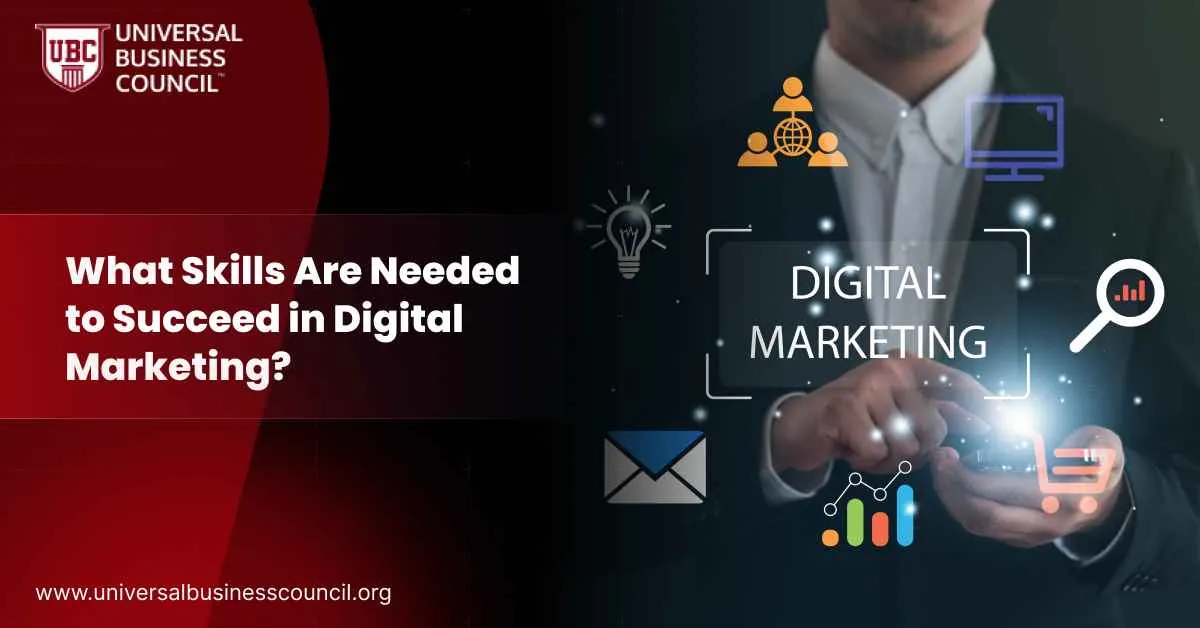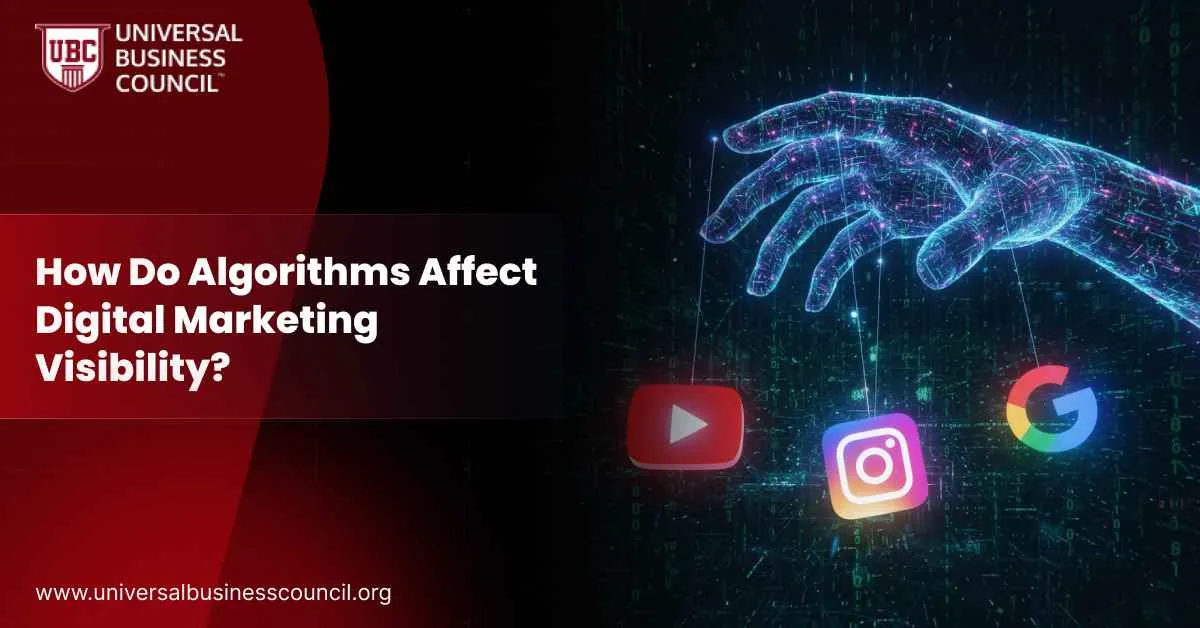 Digital marketing has evolved into a vast, interconnected ecosystem of channels and strategies that help businesses reach audiences online. Whether you are a beginner exploring marketing fundamentals or a professional refining your strategy, understanding the main types of digital marketing is essential.
In 2025, businesses no longer rely on just one marketing method. They use a mix of search, social, content, and paid campaigns supported by automation and analytics. If you want to learn how these types work together, taking an AI Powered Digital Marketing Program is a great way to gain hands-on experience with real-world tools and case studies.
Digital marketing has evolved into a vast, interconnected ecosystem of channels and strategies that help businesses reach audiences online. Whether you are a beginner exploring marketing fundamentals or a professional refining your strategy, understanding the main types of digital marketing is essential.
In 2025, businesses no longer rely on just one marketing method. They use a mix of search, social, content, and paid campaigns supported by automation and analytics. If you want to learn how these types work together, taking an AI Powered Digital Marketing Program is a great way to gain hands-on experience with real-world tools and case studies.
What Do We Mean by “Types” of Digital Marketing and Why It Matters?
The term “types of digital marketing” refers to the various methods brands use to reach, engage, and convert audiences in the online space. Each type has its own purpose — some build awareness, others drive sales, and many enhance customer loyalty.
In the past, marketers separated channels like SEO, email, and social media. But as technology advanced, these methods started blending. For example, an email campaign might be personalized using SEO insights or AI data from social media analytics.
Understanding these categories helps marketers:
- Choose the right mix of channels for specific goals.
- Allocate budgets more effectively.
- Use analytics to track performance across touchpoints.
- Adapt quickly as technologies evolve.
Professionals who want to understand how technologies like AI, blockchain, and automation influence these marketing categories can benefit from the Deep Tech Certification offered by Blockchain Council. It explains how technical systems power marketing innovation today.
Core Foundational Types of Digital Marketing
While there are dozens of marketing subtypes, several core ones form the foundation of any strategy. These are the types every marketer must master.
1. Search Engine Optimization (SEO)
SEO is the process of improving your website to increase its visibility on search engines like Google. The higher your site ranks for relevant keywords, the more organic traffic you receive.
Key elements of SEO:
- On-page optimization: Optimizing titles, meta descriptions, and content.
- Off-page optimization: Building backlinks from trusted sources.
- Technical SEO: Improving site speed, indexing, and mobile usability.
Tools like Ahrefs
, SEMrush
, and Surfer SEO
help analyze keywords and track performance. SEO remains one of the most cost-effective marketing types because it drives long-term, sustainable results.
2. Content Marketing
Content marketing focuses on creating valuable, informative, and entertaining material to attract and engage audiences. It includes blogs, videos, podcasts, infographics, and eBooks.
In 2025, content marketing relies heavily on data and AI insights to understand audience preferences. Brands use tools like Jasper AI
and Grammarly
to create personalized and optimized content faster.
Content doesn’t just promote products; it builds trust and authority. A strong content strategy also supports SEO, social media, and email marketing simultaneously.
3. Social Media Marketing
Social media marketing uses platforms like Instagram, LinkedIn, Facebook, TikTok, and X (Twitter) to connect with audiences. It combines content creation, community building, and paid advertising.
Marketers use tools like Hootsuite
, Buffer
, and Sprout Social
to manage multiple accounts, schedule posts, and measure engagement.
The future of social media marketing lies in AI personalization
and creator partnerships
. Platforms are integrating predictive algorithms that customize content feeds based on individual interests.
4. Email Marketing
Email marketing is still one of the most effective ways to engage customers directly. It helps nurture leads, promote offers, and maintain relationships.
Popular tools like Mailchimp
, HubSpot Marketing Hub
, and ActiveCampaign
automate emails based on customer behavior.
In 2025, personalization is key. AI helps tailor subject lines, content, and delivery timing for each recipient. This makes email marketing more relevant and profitable.
5. Pay-Per-Click (PPC) Advertising
PPC is a paid model where advertisers pay each time someone clicks on their ad. Common platforms include Google Ads, Meta Ads Manager, and LinkedIn Campaign Manager
.
AI-driven PPC systems now use smart bidding
, automatically adjusting ad spend to maximize ROI. These campaigns can target specific demographics, behaviors, and even times of day.
6. Affiliate and Influencer Marketing
Affiliate marketing involves partnering with affiliates who promote your product for a commission. Influencer marketing extends this by collaborating with content creators who already have loyal audiences.
Influencers on Instagram, YouTube, and TikTok have become trusted voices in 2025. AI tools now help brands identify influencers based on engagement rates and audience authenticity.
7. Mobile Marketing
Mobile marketing reaches users on smartphones and tablets through SMS campaigns, app-based ads, and push notifications. With mobile usage accounting for over 60% of global internet traffic, it’s a vital channel.
Apps like Firebase
and Braze
help track mobile engagement and push campaign effectiveness. Marketers are now combining mobile marketing with location-based services for hyper-targeted campaigns.
Professionals who want to master automation and data tracking in these foundational types can pursue the Tech Certification
from Global Tech Council. It provides technical insight into analytics, automation, and campaign management systems.
Emerging and Niche Types of Digital Marketing in 2025
Beyond traditional methods, new digital marketing types are shaping how brands reach audiences in 2025.
1. Video Marketing
Short-form videos have taken over digital spaces. Platforms like TikTok, YouTube Shorts, and Instagram Reels dominate engagement rates.
AI tools like CapCut
, Pictory
, and Runway ML
help marketers create and edit videos quickly. Video storytelling is now integrated into almost every marketing campaign.
2. Conversational and Chatbot Marketing
Chatbots powered by AI and natural language processing allow brands to interact with customers 24/7.
These bots can answer questions, provide recommendations, and even guide users through a purchase. Tools like Drift
and Intercom
integrate chat automation with CRM systems to create seamless communication.
3. Voice and Audio Marketing
With the rise of voice assistants
like Siri, Alexa, and Google Assistant, optimizing for voice search is critical. Audio content like branded podcasts also helps build deeper customer engagement.
Marketers are using AI tools to transcribe and analyze audio content for search optimization.
4. Online PR and Reputation Management
Online PR focuses on maintaining a brand’s credibility across the web. This involves securing press coverage, managing reviews, and responding to customer feedback on platforms like Google Business or Yelp.
Tools such as Mention
, Brand24
, and Google Alerts
help monitor brand sentiment.
5. Programmatic and Display Advertising
Programmatic advertising uses AI to automate ad buying and placement across the internet. It helps marketers reach audiences at the right moment with minimal human effort.
Tools like The Trade Desk
and AdRoll
are leaders in this space.
6. Virtual and Augmented Reality Marketing
AR and VR campaigns are changing how brands offer experiences. From virtual showrooms to AR product demos, immersive marketing is becoming a key trend.
Brands like IKEA and Nike already use AR to allow users to visualize products before buying.
7. Conversational AI in Customer Engagement
AI assistants now personalize customer experiences across email, chat, and social platforms. They analyze tone and behavior to respond naturally. This is becoming the next frontier of marketing interaction.
How the Types of Digital Marketing Are Evolving
The lines between these marketing types are blurring as AI and data integration become the norm. For example:
- Content marketing now fuels SEO and social campaigns simultaneously.
- Email marketing uses insights from PPC and analytics tools to personalize outreach.
- AI automation connects every type, ensuring messages are consistent across channels.
Modern marketing is integrated marketing
— where all types work together instead of existing separately.
Marketers who want to master this holistic approach can explore the Marketing and Business Certification from Universal Business Council. It teaches how to align marketing channels with business strategy for sustainable growth.
How to Choose the Right Type of Digital Marketing for Your Business
Choosing which types of digital marketing to focus on depends on your target audience, goals, and resources. Here’s how to decide:
Understand Your Audience:
- Use analytics tools to learn where your audience spends time online.
- Gen Z responds better to TikTok and short-form video, while professionals engage more on LinkedIn.
Set Clear Goals:
- If the goal is awareness, focus on SEO and social media.
- If conversion is the goal, prioritize PPC, email, and retargeting campaigns.
Start with Core Channels:
- SEO and Content marketing form the foundation of long-term visibility.
- Add paid and social channels as you grow.
Measure and Adapt:
- Use analytics tools like Google Analytics 4 and Looker Studio to evaluate what’s working.
- Continuously optimize your mix for ROI.
What are the top five types of digital marketing in 2025?
SEO, content marketing, social media marketing, email marketing, and PPC remain the most effective and widely used.
Which emerging digital marketing types are trending?
Voice marketing, conversational AI, and augmented reality marketing are becoming more popular in 2025.
How can beginners learn about digital marketing types?
Enrolling in structured programs like the AI Digital Marketing Course
provides a practical, hands-on introduction to all major digital marketing types.
Can small businesses use all types of digital marketing?
Not necessarily. It’s better to start with two or three core types, then expand as your business and budget grow.
Are AI and automation replacing human marketers?
No. AI supports marketers by automating repetitive tasks, but creativity, empathy, and strategy still rely on human expertise.
Conclusion
The main types of digital marketing form the backbone of how brands communicate with audiences today. From traditional SEO and content marketing to emerging fields like AR and conversational AI, every type plays a unique role in creating awareness, driving engagement, and boosting sales.
Digital marketing continues to evolve, but one principle remains constant — those who adapt and learn stay ahead. Understanding these types empowers marketers to design intelligent, data-driven campaigns that shape the future of digital business.
 Digital marketing has evolved into a vast, interconnected ecosystem of channels and strategies that help businesses reach audiences online. Whether you are a beginner exploring marketing fundamentals or a professional refining your strategy, understanding the main types of digital marketing is essential.
In 2025, businesses no longer rely on just one marketing method. They use a mix of search, social, content, and paid campaigns supported by automation and analytics. If you want to learn how these types work together, taking an AI Powered Digital Marketing Program is a great way to gain hands-on experience with real-world tools and case studies.
Digital marketing has evolved into a vast, interconnected ecosystem of channels and strategies that help businesses reach audiences online. Whether you are a beginner exploring marketing fundamentals or a professional refining your strategy, understanding the main types of digital marketing is essential.
In 2025, businesses no longer rely on just one marketing method. They use a mix of search, social, content, and paid campaigns supported by automation and analytics. If you want to learn how these types work together, taking an AI Powered Digital Marketing Program is a great way to gain hands-on experience with real-world tools and case studies.




Leave a Reply